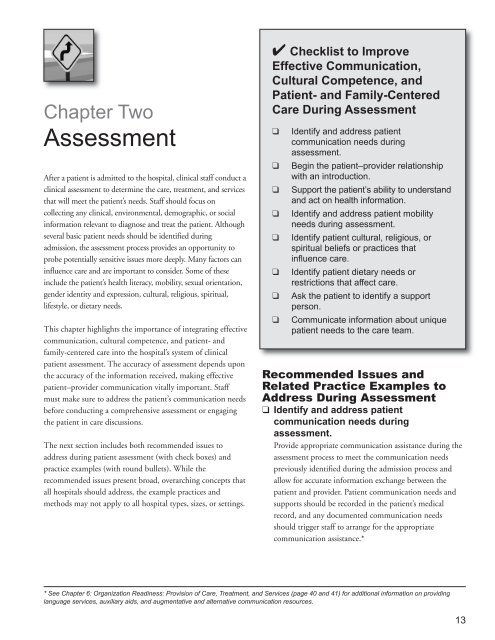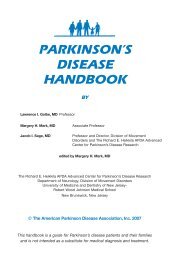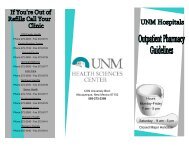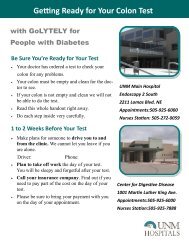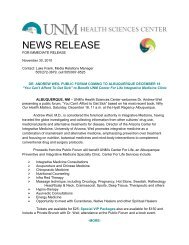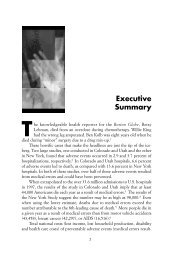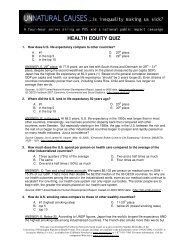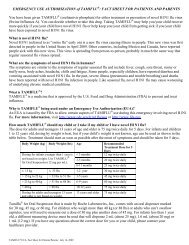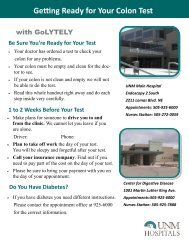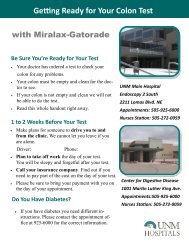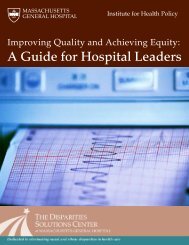Advanced Effective Communication, Cultural Competence, and ...
Advanced Effective Communication, Cultural Competence, and ...
Advanced Effective Communication, Cultural Competence, and ...
You also want an ePaper? Increase the reach of your titles
YUMPU automatically turns print PDFs into web optimized ePapers that Google loves.
Chapter Two<br />
Assessment<br />
After a patient is admitted to the hospital, clinical staff conduct a<br />
clinical assessment to determine the care, treatment, <strong>and</strong> services<br />
that will meet the patient’s needs. Staff should focus on<br />
collecting any clinical, environmental, demographic, or social<br />
information relevant to diagnose <strong>and</strong> treat the patient. Although<br />
several basic patient needs should be identified during<br />
admission, the assessment process provides an opportunity to<br />
probe potentially sensitive issues more deeply. Many factors can<br />
influence care <strong>and</strong> are important to consider. Some of these<br />
include the patient’s health literacy, mobility, sexual orientation,<br />
gender identity <strong>and</strong> expression, cultural, religious, spiritual,<br />
lifestyle, or dietary needs.<br />
This chapter highlights the importance of integrating effective<br />
communication, cultural competence, <strong>and</strong> patient- <strong>and</strong><br />
family-centered care into the hospital’s system of clinical<br />
patient assessment. The accuracy of assessment depends upon<br />
the accuracy of the information received, making effective<br />
patient–provider communication vitally important. Staff<br />
must make sure to address the patient’s communication needs<br />
before conducting a comprehensive assessment or engaging<br />
the patient in care discussions.<br />
The next section includes both recommended issues to<br />
address during patient assessment (with check boxes) <strong>and</strong><br />
practice examples (with round bullets). While the<br />
recommended issues present broad, overarching concepts that<br />
all hospitals should address, the example practices <strong>and</strong><br />
methods may not apply to all hospital types, sizes, or settings.<br />
✔ Checklist to Improve<br />
<strong>Effective</strong> <strong>Communication</strong>,<br />
<strong>Cultural</strong> <strong>Competence</strong>, <strong>and</strong><br />
Patient- <strong>and</strong> Family-Centered<br />
Care During Assessment<br />
❑<br />
❑<br />
❑<br />
❑<br />
❑<br />
❑<br />
❑<br />
❑<br />
Identify <strong>and</strong> address patient<br />
communication needs during<br />
assessment.<br />
Begin the patient–provider relationship<br />
with an introduction.<br />
Support the patient’s ability to underst<strong>and</strong><br />
<strong>and</strong> act on health information.<br />
Identify <strong>and</strong> address patient mobility<br />
needs during assessment.<br />
Identify patient cultural, religious, or<br />
spiritual beliefs or practices that<br />
influence care.<br />
Identify patient dietary needs or<br />
restrictions that affect care.<br />
Ask the patient to identify a support<br />
person.<br />
Communicate information about unique<br />
patient needs to the care team.<br />
Recommended Issues <strong>and</strong><br />
Related Practice Examples to<br />
Address During Assessment<br />
❑ Identify <strong>and</strong> address patient<br />
communication needs during<br />
assessment.<br />
Provide appropriate communication assistance during the<br />
assessment process to meet the communication needs<br />
previously identified during the admission process <strong>and</strong><br />
allow for accurate information exchange between the<br />
patient <strong>and</strong> provider. Patient communication needs <strong>and</strong><br />
supports should be recorded in the patient’s medical<br />
record, <strong>and</strong> any documented communication needs<br />
should trigger staff to arrange for the appropriate<br />
communication assistance.*<br />
* See Chapter 6: Organization Readiness: Provision of Care, Treatment, <strong>and</strong> Services (page 40 <strong>and</strong> 41) for additional information on providing<br />
language services, auxiliary aids, <strong>and</strong> augmentative <strong>and</strong> alternative communication resources.<br />
13


